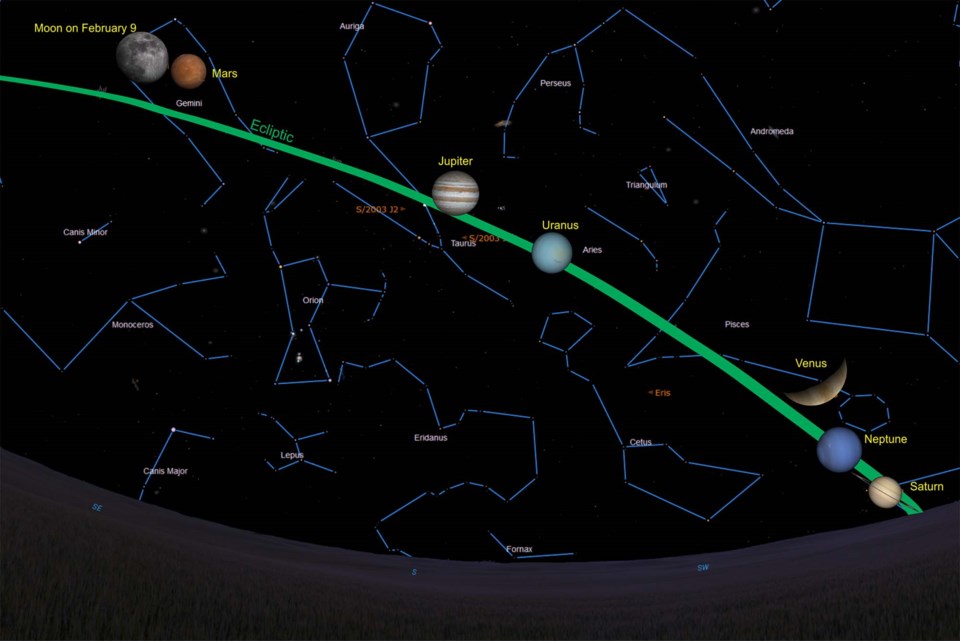Alberta stargazers are in for a treat this month as their local planets line up for a parade in the night sky.
Astronomers around the world can now look up and see all but one of the solar system’s planets lined up across the night sky — a phenomenon known as a planetary alignment or parade. These parades occur when the orbits of the planets put them all on the same side of the Earth at once.
Frank Florian, senior manager of planetarium and space sciences at the Telus World of Science in Edmonton, said these parades happen every few years due to the different orbital periods of the planets. This parade started around last Christmas and should last until late February.
“All the major planets at some point over the next month will be visible in the evening sky,” he said.
Florian noted that the planets are not actually in a straight line relative to each other or the sun — that will never happen due to the periods of their orbits. They are, however, all in a position where we can see them, which makes them appear to line up.
The lineup
Florian said these planets will appear as very bright stars that follow a curved line in the sky during the parade. This line, known as the ecliptic, is the result of the planets all lying in relatively the same orbital plane, which in turn was a consequence of them all spinning out of the same primordial disc of gas when the solar system formed.
Florian said you can spot these planets by looking for exceptionally bright points of light that move relative to the stars.
“The word ‘planet’ means ‘the wanderer,’” he noted, which refers to the way these “stars” move across the sky.
St. Albert astronomer Murray Paulson said he’s been observing the parade this month using his backyard telescope. Venus is the very bright star low in the southwest, and currently looks like a half-moon through a telescope (it’s half-lit by the sun right now). Look right below it with a telescope, and you’ll see Saturn. You’ll have to squint to see its rings, as we’re looking at them edge-on right now. Neptune should be somewhere above and east of Venus.
You can spot Mars to the east starting at around 6:30 p.m., Paulson continued.
“It’s the brightest thing in the eastern sky, and it’s sort of reddish in colour.”
Jupiter is the brightest object besides the moon in the southeast and is very high in the sky, Paulson said. Telescope users may be able to spot its colourful clouds and four of its 95 moons. Uranus is down and west of Jupiter. You’ll need a star chart and telescope to identify Uranus, as it is currently in amongst a bunch of other stars.
Florian said the planetary parade should be visible throughout Alberta until the end of February, with the last Earth-visible planet, Mercury, joining it by the middle of next month.
Paulson said now was your best chance to see the most planets in the sky at once, as Saturn and Neptune will be nearly out of sight by the time Mercury arrives.
“And if you take a look at your feet, well, there’s the No. 3 planet, Planet Earth.”



